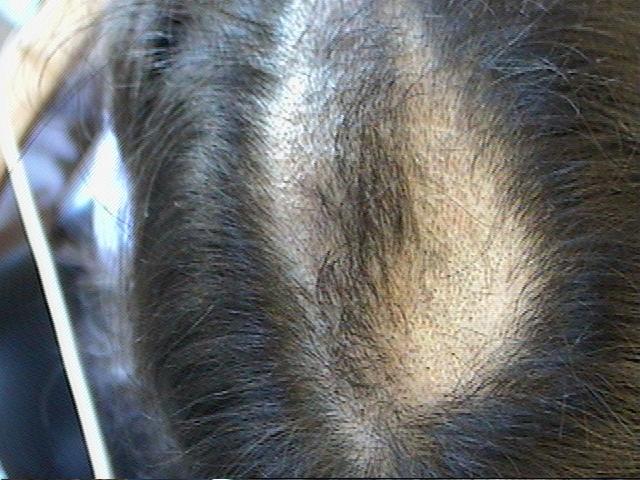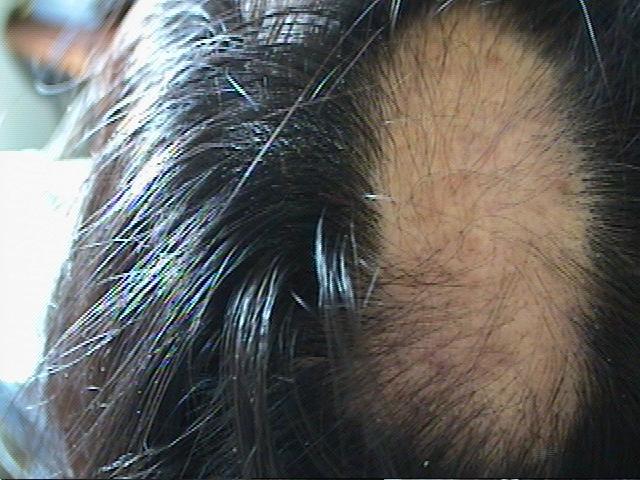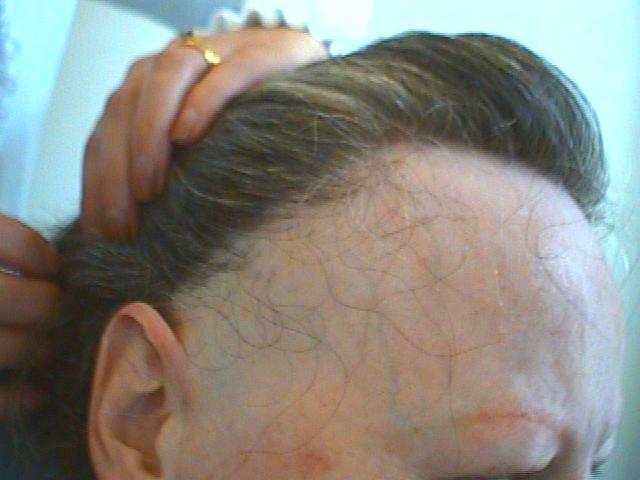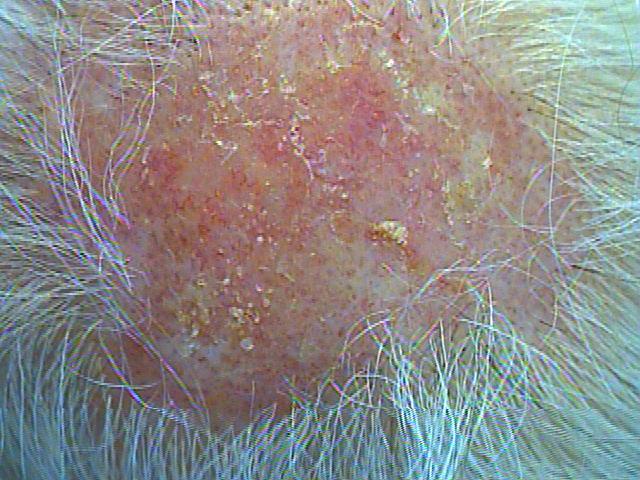Why am I losing my hair?
The health of your hair and scalp can tell a lot about your overall health. Hair loss or thinning can be the result of:
your genetics
stress
nutritional deficiencies
lifestyle factors
medications
hormones; or
a more complex underlying issue/s.
Finding a qualified and experienced trichologist is the most effective way of identifying the cause of your hair loss and finding a solution perfect for you. They will be able to tell you whether simple changes to diet and lifestyle or specific hair loss treatment is the best option for you.
Male Hair Loss
Hair loss in men is quite common but it doesn’t have to be your reality. Many men assume they are just genetically doomed to hair loss. Genetics can play a factor but there are lots of other reasons why you might be losing your hair including medication, stress, hormone imbalances or poor diet and lifestyle.
Female Hair Loss
Hair loss in women is quite common but often a taboo subject. Some women have a genetic tendency towards hair loss while others may experience hair loss as a result of hormonal imbalances (pregnancy, menopause), stress, medications, diet and lifestyle, poor sleep patterns, or something more complex.
A qualified trichologist can identify the causes of your hair loss and give you a range of options that suit your condition, your lifestyle and your budget.
You don’t have to suffer in silence – a qualified trichologist can identify what’s going on and give you treatment options so you can get your confidence back and live life to the fullest again.
What could the problem be?
Hair Shaft Problems
Hair shaft problems can lead to hair breakage and can be caused by external factors such as:
brushing
combing
overheating
chemical damage
ultraviolet rays from sunlight
…or they can be genetic. Unfortunately, there are no treatments for the genetic hair shaft problems.
Sufferers of these problems must be as gentle as possible with their hair to avoid hair breakage. Sometimes, with the onset of puberty, these genetic hair shaft problems lessen or disappear. It is important to remember that with genetic hair shaft problems, the hair of different people is affected in varying degrees.
The following information and images are used with the permission of the International Association of Trichologists.
Bubble Hair
Under the microscope, bubbles can be seen in the hair shaft.
+ Read more
These are a result of over-heating the hair, with thermal styling tools i.e.: blow-dryers and irons. The bubbles can change the colour of hair; bleached hair can turn pinkish.
Trichorrhexis Nodosa
Refers to fracturing of the hair shaft from external factors. The hair will eventually break at this weak point.
+ Read more
It looks like a white speck on the hair. These are a result of over-heating the hair, with thermal styling tools i.e.: blow-dryers and irons. The bubbles can change the colour of hair; bleached hair can turn pinkish.
Nits on the Hair Shaft
Nits – also known as head lice - are the eggs of the adult louse.
+ Read more
Nits are glued to the hair shaft on one side and do not flake off. Nits need the temperature of the human head to survive. The eggs take 8 – 10 days to hatch.
The adult Louse: Do not hop or fly (they are wingless) but can crawl at a rapid rate (23cm/min under natural conditions). An adult louse is approx. 2mm to 4mm long and has six legs. They live for three to four weeks, staying close to the scalp for food, warmth, shelter and moisture. The adult louse feeds every 3hrs to 6hrs by sucking blood and simultaneously injecting saliva.
Hair Casts
Hair Casts look like a white speck on the hair but, unlike nits or Trichorrhexis Nodosa, they can be slid up and down the hair.
+ Read more
They are formed when the tip of the external root sheath breaks off. Hair Casts will not lead to hair breakages and their cause is not known.
Trichothiodystrophy
Referred to as “Tiger Tail” trichothiodystrophy is inherited as an autosomal recessive trait (inherited from both parents).
+ Read more
In this condition, the hair lacks sulphur – the element that makes hair and nails strong.
Monilethrix
Inherited as an autosomal dominant trait (inherited from either parent), it is also known as “beaded hair.”
+ Read more
The hair shaft fluctuates in diameter and is identified by nodes occurring at regular intervals, with the constricted areas not having any medulla.
Pili Annulati
Sometimes referred to as “banded” or “ringed hair”, Pili Annulati gives alternating dark and light bands in the hair.
+ Read more
Inherited as an autosomal dominant trait (inherited from either parent), people can be born with it or it occurs for the first time during infancy.
The black areas are empty spaces in the cortex of the hair. The empty air-filled spaces make the hair very fragile and prone to breakage. Interestingly, it is sometimes seen with Alopecia Areata.
Trichotillomania
Trichotillomania is when people pull out their own hair.
+ Read more
It is more common in children than adults and in some cases, is classified under ‘obsessive-compulsive disorders’. The constant pulling produces a ragged irregular patches of incomplete baldness, usually in easily accessible areas such as the scalp, eyelashes and eyebrows. The follicles are intact and the scalp looks normal. On the scalp, several shorter hairs - either new or broken ones – are seen in the affected areas.
Trichokryptomania
Trichokryptomania is a compulsion to break off hair or to cut if off with scissors.
+ Read more
This can also be classified as an obsessive-compulsive condition.
Scalp Disorders and Hair Loss
Psoriasis
Psoriasis is an autoimmune problem characterised by patches of scaling anywhere on the head or body.
+ Read more
The scalp, elbows and knees are common sites for the scaling. The scaling fluctuates, the patches bleed easily if scratched, and the ears are often affected – the crease of the ear, and on the inside and outside of the ear.
Pityriasis Amiantacea
This is an easy scaly problem to recognise because the scale sticks to the hair or the hair sticks to the scalp.
+ Read more
Sometimes, when the scale is removed, the hair comes with it, but usually grows back.
Vitiligo
Vitiligo is the condition whereby white depigmented patches occur on the skin or patches of hair turn white.
+ Read more
Is it thought to be an autoimmune problem; white blood cells attack the melanocytes (the cells that produce pigment). It is sometimes seen with Alopecia Areata or Psoriasis; both of which are autoimmune problems.
Tinea Capitis
Also known as “ringworm of the scalp”, this contagious condition usually occurs in circles and is hair breakage rather than hair loss.
+ Read more
Different types of fungi eat away at the hair’s cuticle (ectothrix) or the cortex and the cuticle (endothrix), eventually leading to hair breakage. Itching and inflammation of the area in question are common.
Diffuse Hair Loss
Diffuse hair loss or ‘Telogen Effluvium’, as it is termed, is the most common cause of hair loss in adult females.
+ Read more
It can be divided into “temporary self-correcting diffuse hair loss” or “permanent diffuse hair loss until the cause is corrected.”
Loose Anagen Syndrome
With this problem, hair is lost easily from the scalp because the hair’s cuticles not interlinking properly with the cuticle of the inner root sheath.
+ Read more
It is this interlinking that normally holds the hair strongly in the hair follicle.
It’s predominantly females who suffer from this problem with young fair-haired girls appearing to be more prone than others suggesting genetics plays a part.
You may suspect this problem if the hair comes out easily, on a gentle pulling, and you cannot see or feel any hair bulb. However, under the microscope, one can see very poor anagen bulbs, without the root sheath.
Male Pattern Baldness
More than 95% of all cases of hair loss in men are Androgenetic Alopecia, otherwise known as Male Pattern Hair Loss.
+ Read more
This is where recession of the hair occurs at the temples and/or the front/crown areas of the scalp. The final stage of such a loss leaves a band of hair around the back and sides of the scalp and baldness over the rest of the scalp.
The thinning usually begins during the late teens and early 20s and sufferers are well on the way to baldness by the age of 30. About 50% of men suffer genetic hair loss to varying degrees by the age of 50.
Genetic hair loss is not caused by poor circulation, tight scalp, blocking of hair follicles by sebum, or by microorganisms in the hair follicles.
Genetic hair loss is easily recognised by its location on the scalp (top and/or front) and by the manner in which it occurs. It is not marked by a rapid loss of hair. Hair follicles in certain areas begin to produce hairs of a shorter growth phase and, with each succeeding cycle, thinner hairs are produced until only fine vellus hairs are left. Usually the whole process takes between ten and forty years.
Female Pattern Hair Loss
Female pattern hair loss is characterised by thinning of hair in the front/top areas of the scalp.
+ Read more
This thinning does not lead to baldness. The growing phase of many of the hairs in the area become shorter, producing shorter, finer hairs. However, many of the hairs in the front/top sections are untouched by this process so that the general appearance of the scalp is of a thinning in the area of question. Some women complain of a “burning” sensation in the top/front section.
The thinning often begins at the time of menopause or after a hysterectomy in those women genetically predisposed. At these times, the change in the sex hormone balance gives the male sex hormones (androgens) more influence and triggers the thinning.
In the past, women in their twenties or thirties seldom suffered female pattern hair loss unless a hormonal imbalance was present. However, trichologists are now seeing more younger women with genetic thinning. It is believed that the reason for this is the progestogens in some oral contraceptives. Progestogens levonorgestrel and norethisterone, have a male sex hormonal influence and might trigger genetic thinning in those women genetically predisposed to it.
Alopecia Areata
Alopecia Areata is where circular patches of baldness occur quickly on the scalp (or face or body).
+ Read more
Occasionally a diffuse Alopecia Areata can occur, when hair is lost from all over the scalp, but not in patches, sometimes leading to baldness. It can also affect hairs from anywhere on the scalp, head and body.
Alopecia Areata is an autoimmune problem, which in this case, means that one group of white blood cells attacks some cells of the hair bulb. Millions of different groups of white blood cells circulate in the blood and lymphatic system. They help protect the body from attack by viruses, bacteria and other micro-organisms.
People who experience Alopecia Areata have a genetic predisposition for the problem, however it still takes something to trigger the problem. The trigger could be a viral or bacterial infection, a vaccination, stress, trauma to the skin or exposure to a substance not previously encountered.
Traction Alopecia
Anything that holds or pulls the hair tightly for a long period of time can lead to a thinning of hair in the area in question.
+ Read more
This can include tight braids, ponytails and buns.
Syphilitic Alopecia
This is the hair loss that occurs with the secondary stage of syphilis.
+ Read more
It is often described as “moth eaten” for obvious reasons. The eyebrows and beard can also be affected. Medical treatment is essential.
At a glance, it can look like genetic recession of hair but a careful look will establish that hair follicles have been destroyed. Sometimes you see white flakes around the hair follicles, which also occurs with Lichen Planopilaris. Eyebrows are often affected.
Frontal Fibrosing Alopecia
Generally occurs along the frontal hairline and around the ears in the post-menopausal women.
+ Read more
It’s becoming the most common autoimmune scarring alopecia and
At a glance, it can look like genetic recession of hair but a careful look will establish that hair follicles have been destroyed. Sometimes you see white flakes around the hair follicles, which also occurs with Lichen Planopilaris. Eyebrows are often affected.
Folliculitis Decalvans
In the case of Folliculitis Decalvans; the bacterium Staphlyoccus Aureus plays a part in the cause, so anti-bacterials (such as clindamycin or erythromycin) are used as part of the therapy.
+ Read more
Tufted folliculitis is sometimes seen where several hairs grow out of the same hair follicle.
Discoid Lupus Erythematosus
Erythema means redness and this characterises the patches of baldness. Some patients also show the “butterfly-pattern” of redness around the nose.
Central Centrifugal Cicatricial Alopecia
CCCA is particularly prevalent in African and Afro-American people. It is caused by the harsh chemicals used for straightening the hair coming into contact with the scalp.
+ Read more
Not only do chemicals burn the scalp but they can also trigger an autoimmune reaction, leading to further patches of cicatricial baldness.
Often the hair has also been braided in the past and/or present, so traction alopecia is often seen in patients who suffer CCCA. Perifollicular is usually present around the follicles that still exist.
Chemical burns
When the destruction of hair follicles is caused by using foils to bleach or tint the hair (to give “highlights”), usually one or two patches of scarring alopecia can occur.
+ Read more
Highlighting (lightening) the hair requires the use of oxidation products on the hair that will oxidise the pigment of the hair. As a result, the pigment loses its colour and the hair becomes lighter.
A solution of hydrogen peroxide, of pH 2.5 to 4 is normally mixed with a powder bleach containing compounds such as ammonium persulphate and potassium persulphate that act as oxidising agents and also increase the pH of the hydrogen peroxide solution once the two are mixed together. When the two are mixed together, the pH is increased to around 10, which makes the mixture a very powerful oxidising agent. It is essential that the hydrogen peroxide solution and the powder bleach are mixed in the correct proportions.
Scarring Alopecias
There are many types of scarring alopecias. Scarring or Cicatricial Alopecia is where the patches of permanent baldness are caused by destruction of the hair follicles in the areas in question.
+ Read more
The scalp appears smooth because the follicles have disappeared. These problems are usually autoimmune (white blood cells attack the stem cells in the hair bulge) and occur gradually.
Pseudopelade
Characterised by many small patches of baldness occurring at the same time, which show no redness, no infection and no scaling.
Lichen Planopilaris
Characterised by scaling around the hair follicles and of course, destruction of the hair follicles.
Where do I go for help?
A trichologist is the best person to help identify the cause of your hair loss and identify a solution that suits your condition, your lifestyle and your budget. I Am Hair Wellness has a fully qualified experienced trichologist available to help with any issue affecting your hair and scalp.
What can I do to stop my hair loss and/ or scalp concerns?
Once you’ve been to see your trichologist, they will be able to recommend the perfect option to suit your particular situation. There are a range of options including home remedies, topical treatments, prescription medications, low-level laser treatment as well as adjustments to nutritional and lifestyle factors . An approach using Combination Therapy is often the most successful way to tackle hair loss and scalp concerns.
The best part is that nobody needs to know you are having these treatments.
What are my natural options?
There are lots of things you can do to improve your overall health and the health of your hair and scalp. As well as scalp massage and lifestyle adjustments, a regime of dietary supplements and vitamins may be useful in promoting follicular growth. Your trichologist can recommend the best natural options to improve hair and scalp health for you.
What are the topical treatments?
There are a range of topical treatments available to combat hair loss for both men and women. Generally, these take the form of serums or foams applied to the scalp over a period of time to stimulate hair growth. Your trichologist can advise which options would be best for you and the potential results you can expect from these treatments.
What kind of medications are available?
Medications for hair loss come in both prescription and over-the-counter forms depending on your particular condition. Your trichologist will be able to refer you to a dermatologist who can provide you with the best possible option for your hair and scalp, expected results and any side effects.
What is low-level laser therapy?
Low-level laser therapy is a clinical-strength laser that is non-invasive and
pain-free. The laser uses concentrated light to stimulate the hair follicles and can both reduce hair loss, encourage hair regrowth and treat specific scalp disorders. Your trichologist can tell you if low-level laser therapy would suit you, how many treatments you might need and the results you can expect.
Are there any rebates available for trichology?
Unfortunately, trichology is not eligible for Medicare rebates. However, we do offer Afterpay on everything except our cosmetic tattooing (SMP).





























